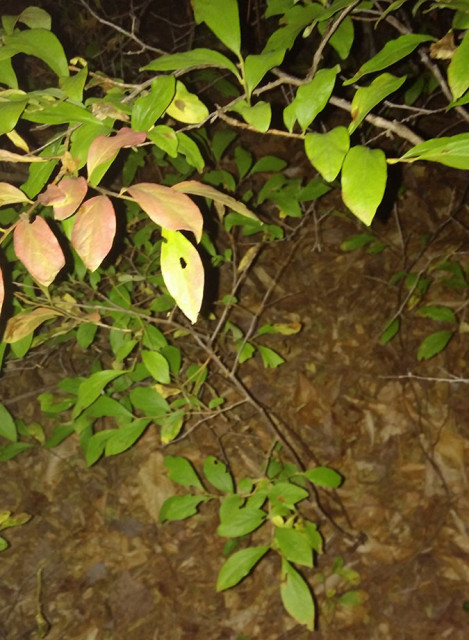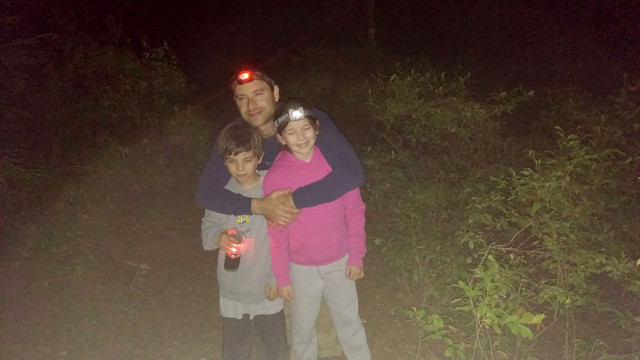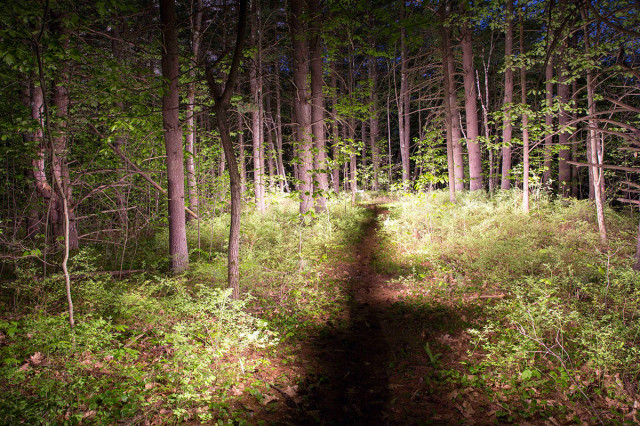Today marks a triumph! Exactly 3 months ago, I arrived at White Lake State Park eager to explore the environment and meet visitors. Since then, I have familiarized myself with the trails around the lake, and shared my programming with the public.

This past week I led a very large and excited group around the lake for an “Into the Night Hike.” Departing the beach just after sunset, we started our journey into the night. Voices from the group reverberated all around us and amidst the din of inquiry and laughter, I eagerly guided them along the trail. Imagine the visitors; the wee-little toddlers that can barely grasp the base of a branch and utter words besides “I am hungry. Carry me….” Imagine kids screaming victoriously while racing ahead—content on leaving everyone behind. Oh, let’s not forget, the preoccupied young adults, slow in strut as if forced to hike, texting away on their mobile devices. All saunter behind adults who responsibly spray others with bug spray as they chat about their week. Leaving it to Mother Nature to awaken the visitor’s senses…I knew all too well how it would end.
Visitors continued in full stride seemingly oblivious to the changing shades and blended colors. We stopped to smell an eastern hemlock and I talked about its unique properties. The dark green wax above and light-white strips just below the needles were visible to inspect. I explained how using one’s sense of touch and smell to identify plants and trees will aid the identification process and most of all, enhance the overall experience in nature. As darkness began to fall, the vegetation, sapling, roots, and fallen branches became less visible.

In our next stop, I picked up wintergreen, passed the tough thick- leaf around and smelled its familiar odor.

By then, noises of the forest emerged and came in conflict with people’s movements and voices. Conversations quelled to murmurs and eventually whispers. Once reaching the destination we regrouped. I asked visitors to calmly find an eastern hemlock and wintergreen without a flashlight. I encouraged them to remember the different characteristics of the plants to guide them in the identification process. They did very well in absolute darkness. They were able to successfully locate the plants and correctly identify them. As we continued on our hike around the lake, the night became pitch black and I switched on my flashlight for safety. We must have walked a half-mile before I decided to stop at the bridge across the creek. I asked everyone to stand still, quite down, and listen to the noises of the night. We shared what we heard around us.

Soon after, I demonstrated 3 animal calls; i.e., barred owl, wolf, and coyote. I performed the barred owl call about 3 times:
“WHO-COOKs-FOR-YOU…WHO-COOKS-FOR-YOU-ALL!”
Just as I was about to have the visitors demonstrate the call, 2 barred owls called back! We were all astonished. This was the very first time I attracted owls to a program. Next, I urged visitors to call and see if the barred owls would fly closer. To our disappointment, the owls remained quiet and did not respond.
Continuing with the calls, the next call was the wolf and coyote call. I preformed the wolf call with a deep howl:
“ahhhhAHHwHOWWW!”
All the visitors tried and we sounded great as a wolf pack. Last was the coyote call which is 3 yurps.
“RuooRuooRUOOOO!”
More screaming than a yurp I thought we did well as a group overall. Our peculiar noise attracted the loons. They called back to us as if we had invaded their peaceful state.
We left the wildlife to the night and quietly headed back. Tired eyes and lethargic bodies in tow, visitors slowly walked toward their campsites to sleep off an eventful night.

I will end my time at White Lake like its visitors–exhausted from the hard work, but leaving knowing that my programs offered people enjoyment. As I leave my home, I leave you with a White Lake message. White Lake State Park is the just the beginning. There are many places to explore and learn about the environment around you.
 By: Luis Nandlall, Interpretive Ranger at White Lake State Park
By: Luis Nandlall, Interpretive Ranger at White Lake State Park

